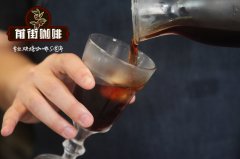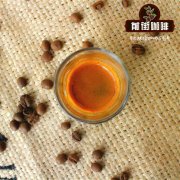Hawaiian Kona Coffee Butter, right? Hawaiian Kona Coffee Queen Manor Farm

Professional coffee knowledge exchange More coffee bean information Please pay attention to coffee workshop (Weixin Official Accounts cafe_style)
● Overview
Hawaiian Kona coffee is grown in the Kona region of Hawaii and is a rare variety that can only be grown on volcanic slopes. The taste is fragrant, mellow, and slightly has a grape fragrance, and the flavor is very special. The Kona coffee of choice has a moderate acidity and a mild, rich taste, with a distinctive, mellow flavor. As production dwindles, prices are catching up with Blue Mountain coffee.
Hawaii's Kona Coast Panhandle produces some of the best coffee in the world and some of the best yields, with Kona producing 2 million pounds of beans a year on less than 2600 acres. Kona coffee has a strong aroma, unique taste, and regional character that makes it stand out from international competition. Kona coffee lovers can brew their own Kona coffee on Kona Coffee Street.
Most coffees on the market that call themselves Kona contain less than 5% real Hawaiian Kona coffee. Another good Hawaiian coffee can be found in the United States-Kai Farms.
● History
Hawaii's earliest settlers arrived in 300 - 400 AD, and historians speculate that they came from the Marquesas Islands. The people lived on the island in separate tribes led by hereditary chiefs. The earliest Hawaiian inhabitants created Hawaii's rich musical culture, although not much writing survives.
The Europeans discovered Hawaii by accident. They were originally looking for a legendary passage to the east to produce spices, but instead they found the richest pearl in the Pacific Ocean.
A captain named James Cook landed on Kauai in 1778 to supply his ships. He encountered severe cold and storms on his way back, and had to return to Hawaii early the following year and anchor on a beach in Kona. Since then, the Hawaiian Islands have become important stopovers on the world trade routes. Hawaii's chiefs traded sandalwood, a native of the island, for weapons, goods and livestock with passing ships. From the 1820s, Western religion began to spread widely on the island, and many churches built in that era are still in use today.
Hawaii is a paradise for coffee tasting and buying. Each island has several unique places for tourists and locals to taste and buy coffee, ranging from cozy shops to comprehensive coffee knowledge centers. In Hawaii, you can watch the blazing sunset sink into the red-orange sea, feel the fresh, flowery air, and sit on the beach with a cup of coffee. I'm afraid there's no place in the world that can offer you such enjoyment.
In 1813, a Spaniard first planted coffee in Oahu's Manoa Valley, which today is the main campus of the University of Hawaii. In 1825, an English agriculturist named John Wilkinson transplanted coffee seeds from Brazil to the coffee plantation of Chief Birch on Oahu. Three years later, an American missionary named Samuel Reverend Ruggles brought branches from Chief Birch's coffee tree to Kona. The coffee is a descendant of the Arabica coffee tree originally grown in the Ethiopian highlands, and Kona coffee continues its noble and ancient lineage to this day.
● Growing environment
The excellent quality of Hawaiian Kona coffee is suited to the right location and climate. Coffee trees grow on volcanic slopes, and their location ensures the altitude at which coffee grows; dark volcanic ash soils provide the minerals coffee needs.
This is probably due to Kona's abundance of volcanic black mud, which is moderately acidic, mineral-rich, and contains the right amount of water. And every afternoon, a cloud drifts over Kona Island to block out the sun to protect the fragile coffee saplings.
The weather conditions are so favourable that the sun gently passes through the steamy air in the morning, the mountains become wetter and foggy in the afternoon, the clouds surge in the air as natural umbrellas for coffee trees, and the nights become clear and cool.
Natural conditions allow the average yield of Kona coffee to be very high, reaching 2240 kg/ha, compared with 600- 900 kg/ha in Latin America.
:: Covering factors
Soil: The rich tropical volcanic soil of Hawaii provides the nutrients of the dense Kona coffee tree.
Altitude: The right altitude of 2100- 3600 meters and cool moonlight promote the slow ripening of Kona coffee fruits and create a rich, moist taste.
Sunlight: Warm tropical sunlight plays an important role in coffee tree reproduction. Hawaii provides the morning light that Kona Coffee needs.
Cloudiness: The rise of clouds at noon ensures and blocks severe direct sunlight.
Rainfall: Clouds bring enough rain, so that coffee after a morning sun, eager to enjoy the afternoon rain moisture baptism.
Slope: A good slope allows the soil to absorb enough water after Kona coffee is made without absorbing too much and affecting the coffee flavor.
● Planting pattern
Kona coffee has always been grown using the family farming model. At first, only men were allowed to work in coffee gardens, but later women joined in. Hawaiian family production was more dependent on family effort than on hiring workers, so it was normal for Hawaiian families to have eight or nine children.
Since then, new immigrants from the Philippines, the United States and Europe have come to Hawaii to engage in coffee farming. Over time, Hawaii has formed a social atmosphere centered on family culture and easy to absorb foreign culture, which has become a major feature of Hawaii.
The harvest season for Hawaiian Kona coffee begins in late August and continues until January, when farmers harvest the ripe fruit in batches and process it to produce beans.
● Production process
Kona coffee is washed and naturally dried. Hawaii's clean, sweet mountain spring water provides ideal conditions for the washing process, which gives Kona coffee beans a bright, clear appearance and pure, fresh taste. The washed coffee beans are placed on huge plates and dried naturally by the sun.
● Taste
Hawaiian Kona coffee tastes fresh, crisp, medium alcohol, slightly sour, but also has a strong aroma, taste after a long finish. Best of all, Kona coffee has a blend of wine, fruit and spice aromas that are as charming as the colorful hues of this volcanic archipelago.
The taste of Kona coffee generally falls into the milder category, so that some people think this mildness is synonymous with bland, and Kona is too refreshing and simple.
But if you're one of those people who wants to get into the mood with the aroma of coffee before you taste it, Kona is the coffee for you, because it's not as mellow as Indonesian coffee, not as strong as African coffee, not as rough as Central and South American coffee. Kona coffee is like a girl walking in the Hawaiian sun and breeze, fresh and natural, not warm.
Qianjie Coffee: Guangzhou's baking shop, small store but a variety of beans, can find a variety of famous beans, but also provide online store services. https://shop104210103.taobao.com
Important Notice :
前街咖啡 FrontStreet Coffee has moved to new addredd:
FrontStreet Coffee Address: 315,Donghua East Road,GuangZhou
Tel:020 38364473
- Prev

How do you make Hawaiian Kona coffee? What if Hawaiian Kona coffee doesn't taste good?
Professional coffee knowledge exchange more coffee bean information please follow the coffee workshop (Wechat official account cafe_style) Hawaii Kona coffee beans have the perfect appearance its fruit is unusually full and shiny. The taste of coffee is rich and aromatic, with cinnamon flavor, and the acidity is well balanced. Hawaiian coffee is the only top-notch product in 50 states in the United States.
- Next

How to sell Hawaiian Kona Coffee? introduction to the World sales of Hawaiian Kona Coffee
Professional coffee knowledge exchange more coffee bean information please follow the coffee workshop (Wechat official account cafe_style) Hawaii Kona Coffee won the title of number one in the world in 2001, followed by the emergence of Blue Mountain, cat shit and other new products, it is the only top coffee produced in the United States, but like Maotai, not all coffee grown in Kona is an award-winning coffee.
Related
- Detailed explanation of Jadeite planting Land in Panamanian Jadeite Manor introduction to the grading system of Jadeite competitive bidding, Red bid, Green bid and Rose Summer
- Story of Coffee planting in Brenka region of Costa Rica Stonehenge Manor anaerobic heavy honey treatment of flavor mouth
- What's on the barrel of Blue Mountain Coffee beans?
- Can American coffee also pull flowers? How to use hot American style to pull out a good-looking pattern?
- Can you make a cold extract with coffee beans? What is the right proportion for cold-extracted coffee formula?
- Indonesian PWN Gold Mandrine Coffee Origin Features Flavor How to Chong? Mandolin coffee is American.
- A brief introduction to the flavor characteristics of Brazilian yellow bourbon coffee beans
- What is the effect of different water quality on the flavor of cold-extracted coffee? What kind of water is best for brewing coffee?
- Why do you think of Rose Summer whenever you mention Panamanian coffee?
- Introduction to the characteristics of authentic blue mountain coffee bean producing areas? What is the CIB Coffee Authority in Jamaica?

